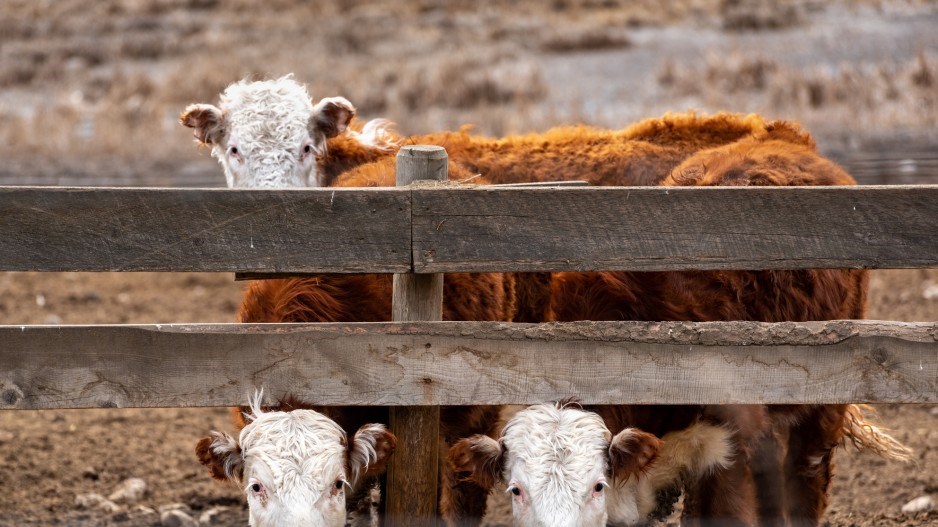Beef producers dealing with the most destructive wildfire season in British Columbia’s history are tallying their losses in terms of cattle and infrastructure such as fences, said an industry leader.
“It’s been one of those summers,” said Kevin Boon, general manager of the B.C. Cattlemen’s Association. “Between fire and drought and water shortages, it’s been crazy.”
Most of B.C.’s water basins were at drought level 4 or 5 as of Sept. 14, said a provincial statement. Five is the highest level and marks the point when creeks are running dry.
The province has been in drought since June 2022 and the situation has continued to worsen, with producers who raise forage facing further shutdowns in irrigation, said Boon. Some areas have lost the third and final cut of the hay needed to get cattle through the winter, he said during an interview Sept. 14.
The provincial government provided $150,000 earlier this year to help beef producers find other sources of feed, including south of the border in the state of Washington. However, the cost could become prohibitive for ranchers in northern B.C., said Boon.
“It’s just with the cost of fuel and everything else, every hour that it’s got to be on that truck is another $250 or so, so it adds up very, very quickly.”
Although cattle have been killed because of this year’s wildfires, there isn’t yet a solid estimate of the numbers, said Boon. Most of the pasture in the summer grazing lands used by beef herds in the province consists of Crown land that is often rugged and mountainous, and the animals are typically rounded up in mid-October through November.
The number of wildfires in B.C. this year totalled 2,178 as of Sept. 17, with 401 considered to be currently active and 10 rated as wildfires of note. About 5.6 million acres have been burned so far this year, up from the next highest total of 3.3 million acres in 2018.
A rancher liaison program launched in 2021 by the B.C. Wildfire Service and the B.C. Cattlemen’s Association has improved communication with beef producers, likely helping to minimize cattle losses this year, said Boon.
“We have seen some cattle perish, but not nearly to the extent we’ve seen in the past.”
The most significant loss in terms of property damage for B.C. beef producers from wildfires is usually fences, he said.
“We have no idea at this point what it will be.”
The industry is still working to replace about 1,500 kilometres of fences destroyed in 2021, which will likely take until at least 2026, said Boon. It took until 2021 to replace fences lost because of fires in 2017, and until last year to replace fences destroyed in 2018, he said.
Although beef producers had previously dealt with wildfires, they have never experienced the magnitude of the fire seasons that have occurred in 2017, 2018, 2021 and 2023, which are the four largest in B.C.’s history, he said.
“We’re out there where the fires are at, and that’s why we lose so much of that infrastructure is the forest and grassland fires are exactly what it takes to burn the fences.”
A provincial state of emergency declared on Aug. 18 expired Sept. 14. Boon expected the intensity of this year’s wildfires will continue to decrease as B.C. moves into the fall and lower temperatures.







